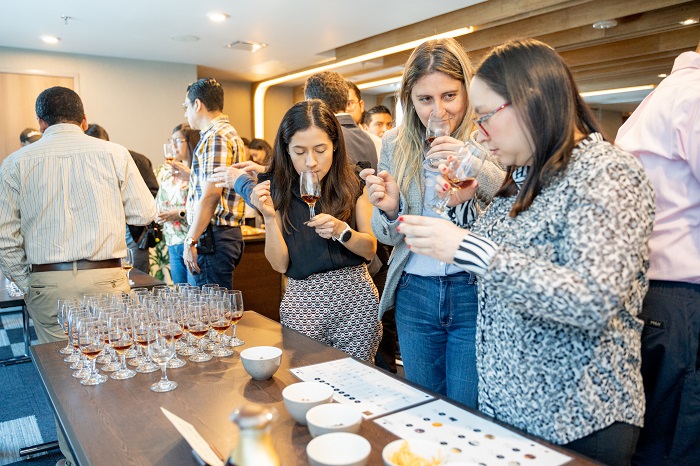Renowned Sommelier Develops a Gastronomic DNA for Ron de Guatemala

François Chartier, a renowned Canadian Sommelier and founder of Chartier World Lab, conducted a scientific study of the Denomination of Origin Ron de Guatemala to create a molecular profile of its four rum categories: Solera Añejo, Solera Reserva, Solera Gran Reserva, and Solera Gran Reserva Especial.
Through this study, Chartier could capture Ron de Guatemala‘s gastronomic DNA and achieve perfect harmony with all the ingredients, aromas, and flavors that go perfectly with each of the profiles of the Guatemalan rums. The analysis results were presented in May 2022 during an event where personalities of the rum industry participated.
In his speech, Chartier described Guatemalan rum as “a magnified harmonic power, like no other type of rum has, thanks to the juxtaposition of its gastronomic DNA and singular aromatic profile.”
The Creation Process of Ron de Guatemala’s DNA

For several months, Chartier Lab worked on a “Singular Aromatic Profile” for each category of the Denomination of Origin, finding countless ingredients, flavors, and aromas. The research was based on the aromatic science of molecular harmonies, resulting in a specific description of the ideal ingredients for creating cocktails and cooking recipes.
Nicolas Roché, a sommelier and Project Leader of Chartier World Lab, states that “there is not one Guatemalan rum, but several Guatemalan rums… This molecular harmonies study led by the Chartier World Lab is the scientific proof of these rums’ gastronomic versatility and aromatic complexity.”
Chartier and his team have made Ron de Guatemala the first Rum Denomination of Origin that reaches a perfect symphony and harmony with the ideal ingredients to create gastronomic recipes and exceptional cocktails. It will allow many chefs and bartenders to use them to innovate in the industry and delight the most demanding palates.
The Distinctive Features of Ron de Guatemala

For decades, complexity and the unique creation process have been two components that have characterized Guatemalan rums over time. Such characteristics have been added to Chartier’s study, providing consumers with a range of gastronomic recipes that pair exquisitely and perfectly with each expression protected as a Denomination of Origin Ron de Guatemala.
“The rums of Denomination of Origin Ron de Guatemala are exceptional. Here we are in the world of alchemy where, through a long and skillful process of patience in different types and origins of barrels, the rum transforms as if by magic; passing from one barrel to another, impregnating itself with the history of barrels of both bourbon, sherry, and cognac to see their aromatic molecules, magnify, and multiply. The result is rums with great aromatic nobility and unique singularity in the world, more specifically, with a refinement not available elsewhere,” Chartier highlighted.
Who Is Francois Chartier?

Francois Chartier has been immersed in aroma research since the late 1980s to understand the impact of aromas in everyday life. His exceptional career makes him unique. In 2004, he created a new science: “molecular harmonies,” based on the potential of aromatic synergy between foods, wines, and beverages, which redefined haute cuisine.
In the last decade, Chartier has received several awards, including “The Best Sommelier in the World,” “The Best Cookbook in the World” in the Innovation category, and “The Best Food and Wine Pairing Book in the World.”
Since 2018, he has been developing multiple gastronomic projects in Tokyo, Japan, along with Sony Music Solution. Such projects consist of aromatic science for the creation of recipes through Artificial Intelligence.












